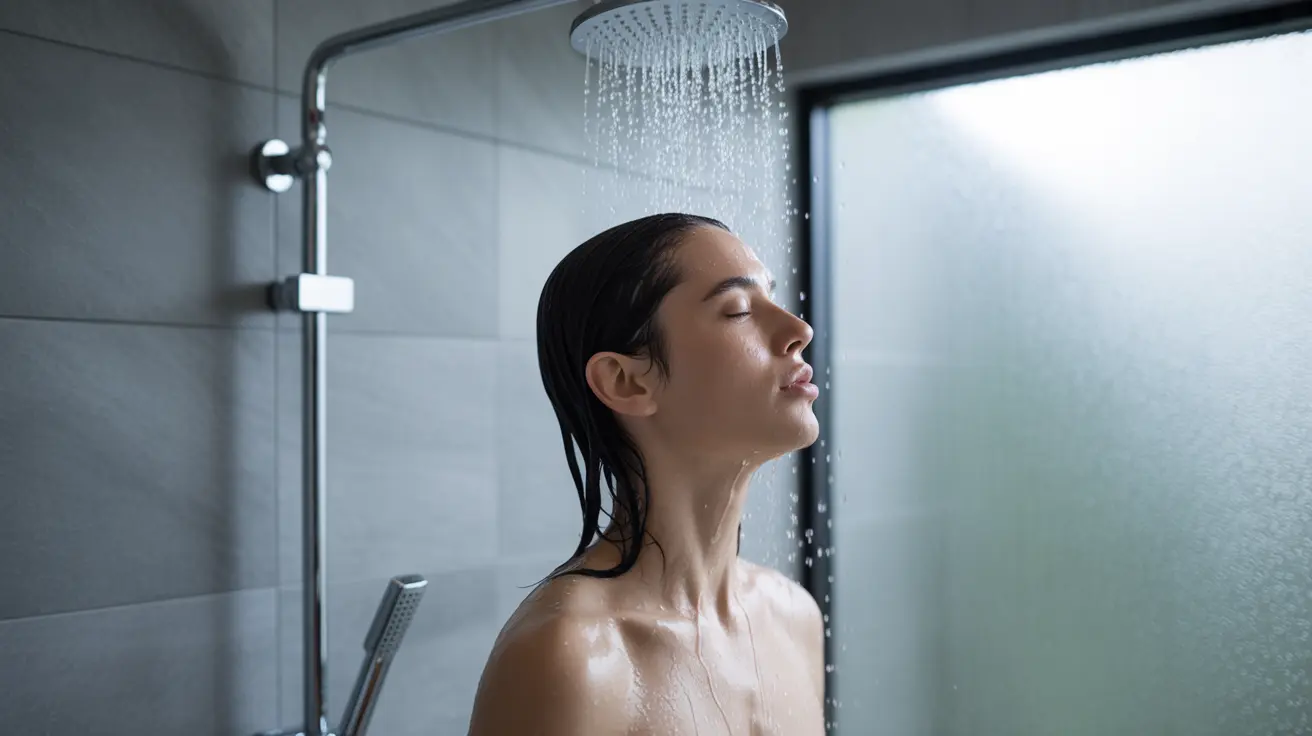In recent years, cold showers have gained attention as a potential natural remedy for anxiety management. While the idea of stepping into cold water might seem daunting, emerging research suggests that this practice could offer significant benefits for mental well-being, including anxiety reduction and mood improvement.
Understanding how cold showers affect anxiety and learning to implement them safely into your wellness routine can provide an additional tool for managing stress and anxiety symptoms. Let's explore the science behind this practice and how you can make it work for you.
How Cold Showers Impact Anxiety and Stress
When you expose your body to cold water, it triggers several physiological responses that can help reduce anxiety symptoms. The cold exposure activates your sympathetic nervous system initially, followed by a powerful parasympathetic response that helps calm your body and mind.
This exposure prompts the release of endorphins and norepinephrine, natural mood boosters that can help alleviate anxiety symptoms. The practice also helps build resilience to stress through controlled exposure to a challenging but manageable stimulus.
The Science Behind Cold Water Therapy
Physical Response Mechanisms
Cold water immersion triggers several beneficial responses in your body:
- Increased endorphin production
- Enhanced circulation
- Reduced inflammation
- Improved immune system function
- Decreased cortisol levels
Mental Health Benefits
Regular cold shower practice can lead to several psychological improvements:
- Better stress management
- Enhanced emotional resilience
- Improved focus and mental clarity
- Greater sense of accomplishment
- Reduced symptoms of depression and anxiety
Safe Implementation of Cold Showers
Getting Started
Begin gradually with these steps:
- Start with warm water and slowly decrease the temperature
- Initially aim for 15-30 seconds of cold exposure
- Gradually increase duration as you build tolerance
- Focus on steady, controlled breathing
- Listen to your body and adjust accordingly
Best Practices for Anxiety Management
To maximize the anxiety-reducing benefits of cold showers:
- Practice at the same time each day
- Start with 2-3 sessions per week
- Combine with other anxiety management techniques
- Use mindfulness practices during your shower
- Track your mood and anxiety levels to monitor progress
Safety Considerations and Contraindications
While cold showers can be beneficial, they're not suitable for everyone. Certain conditions require caution or avoidance:
- Heart conditions
- High blood pressure
- Circulatory problems
- Pregnancy
- Recent illness or fever
Frequently Asked Questions
How do cold showers affect anxiety symptoms, and can they be a substitute for other treatments?
Cold showers can help reduce anxiety symptoms by triggering the release of mood-boosting hormones and activating the parasympathetic nervous system. However, they should complement, not replace, professional treatment for anxiety disorders. They work best as part of a comprehensive anxiety management plan.
What are the potential health benefits of taking regular cold showers, and are they safe for everyone?
Regular cold showers can improve mood, boost immunity, enhance circulation, and reduce inflammation. However, they're not safe for everyone, particularly those with heart conditions, high blood pressure, or during pregnancy. Always consult your healthcare provider before starting a cold shower routine.
Can taking cold showers help improve mood and reduce stress levels, and if so, how often should I take them?
Yes, cold showers can improve mood and reduce stress through endorphin release and nervous system regulation. Start with 2-3 sessions per week, gradually increasing frequency as tolerated. Most people benefit from daily cold showers lasting 30-60 seconds.
Are there any specific health conditions that make it unsafe to take regular cold showers, and what precautions should I take?
People with heart conditions, high blood pressure, circulatory problems, or pregnancy should avoid cold showers or consult their healthcare provider first. Start gradually, monitor your body's response, and stop if you experience any adverse reactions.
How can I incorporate cold showers into my daily routine safely and effectively to manage anxiety?
Start with brief cold exposures at the end of your regular shower, gradually increasing duration. Maintain consistent timing, practice controlled breathing, and track your progress. Begin with 15-30 seconds and slowly work up to longer durations as your tolerance improves.




